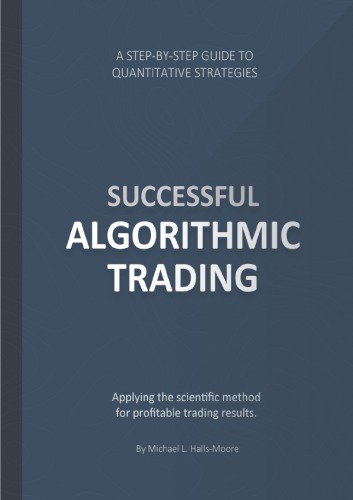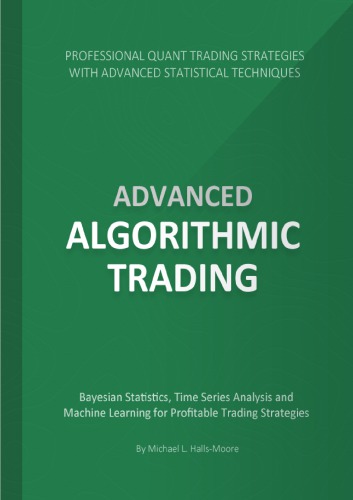موضوعات
آموزش و پرورش
ادبیات و زبان
پزشکی، دندانپزشکی و داروسازی
تاریخ و جغرافیا
داستان و رمان
دیگر
دین و فلسفه
روانشناسی
ریاضیات و آمار
سلامتی، تناسب اندام و رژیم غذایی
شیمی و پلیمر
علوم اجتماعی و حقوق
علوم زیستی و بیوتکنولوژی
فیزیک و نجوم
کامپیوتر و اینترنت
کتابهای کودکان و داستان
کسب و کار و اقتصاد
کشاورزی و دامپزشکی و غذا
معماری
مهندسی و فناوری
هنر و تئاتر
محصولات
Successful Algorithmic Trading - Original PDF
نویسندگان: خلاصه: Whether the systematic rules codi ed by the strategy actually produce a consistent return and whether the strategy possesses positive performance in the backtests. Whether a strategy maintains this positive performance in a live implementation or whether it needs to be retired. The ability to compare multiple strategies/portfolios such that we can reduce the opportu- nity cost associated with allocating a limited amount of trading capital. The particular items of quantitative analysis of performance that we will be interested in are as follows: Returns - The most visible aspect of a trading strategy concerns the percentage gain since inception, either in a backtest or a live trading environment. The two major performance measures here are Total Return and Compound Annual Growth Rate (CAGR). Drawdowns - A drawdown is a period of negative performance, as de ned from a prior high-water mark, itself de ned as the previous highest peak on a strategy or portfolio equity curve. We will de ne this more concretely below, but you can think of it for now as a (somewhat painful!) downward slope on your performance chart. Risk - Risk comprises many areas, and we'll spend signi cant time going over them in the following chapter, but generally it refers to both risk of capital loss, such as with drawdowns, and volatility of returns. The latter usually being calculated as an annualised standard deviation of returns. Risk/Reward Ratio - Institutional investors are mainly interested with risk-adjusted returns. Since higher volatility can often lead to higher returns at the expense of greateAdvanced Algorithmic Trading - Original PDF
نویسندگان: خلاصه: The aim of this book is to provide the "next step" for those who have already begun their quantitative trading career or are looking to try more advanced methods. In particular the book will discuss techniques that are currently in deployment at some of the large quantitative hedge funds and asset management firms. Our main area of study will be that of rigourous statistical analysis. This may sound like a dry topic, but rest assured that it is not only extremely interesting when applied to real world data, but also provides a solid "mental framework" for how to think about future trading methods and approaches. Statistical analysis is a huge field of academic interest and only a fraction of the field can be considered within this book. Trying to distill the topics important for quantitative trading is difficult. However three main areas have been chosen for discussion: • Bayesian Statistics • Time Series Analysis • Machine Learning Each of these three areas is extremely useful for quantitative trading research.آیا کتاب مورد نظر هنوز بر روی سایت قرار نگرفته است؟ جای نگرانی نیست! کافی است بر روی گزینه سفارش کتاب کلیک کرده و درخواست خود را ثبت کنید. در کمتر از چند ساعت کتاب شما را آماده خواهیم کرد.

